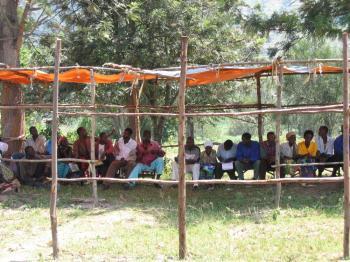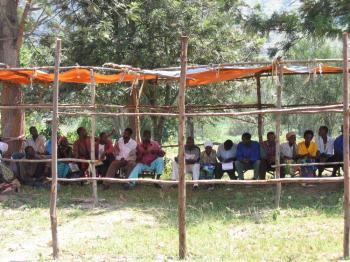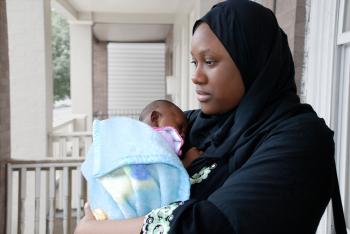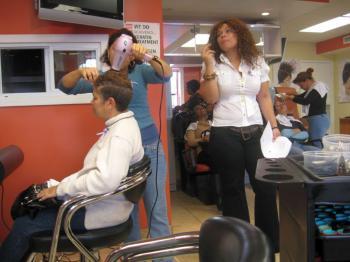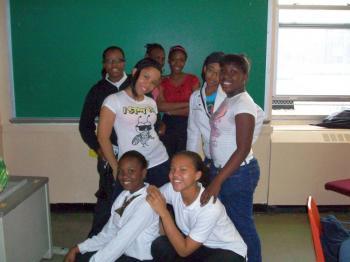Human Rights Watch International Film along with The Film Society of Lincoln Center presented 32 films from 17 countries and 26 New York premieres as part of this year’s International Film Festival.
For 20 years The Human Rights Watch International Films has brought to the world the inconsistency of power and how it affects the people of that country. The following profiles two noteworthy films screened at this year’s festival:
‘My Neighbor, My Killer’
On June 20th My Neighbor, My Killer premiered at Lincoln Center Walter Reade Theater. Director Anne Aghion received the festival’s Nestor Almendros Award for her final film in her series on Rwanda’s Gacaca Tribunals.
These tribunals gave the citizens of Rwandan villages the opportunity to judge the neighbors who took part in killing family members (children, parents, and so on) during the 1994 genocide. The film depicted how the people of Rwanda had to deal with their feelings of hatred and mistrust while accepting the killers of their family into the community.
At the screening Ms. Aghion was asked, “What was the role of the film?” Ms. Aghion replied that the camera played a huge role in making this film. The role of a camera is to tell the story.” Ms. Aghion also mentioned, “I wanted to be as absent as possible.”
The film’s premiere brought a packed theater with a diverse crowd. Among them was audience member Podres Uwizeyimana, who said that he visits Rwanda at least once a year.
“I pick children off the streets in Rwanda to give them an education. It only costs $35 per child to give them an education, shoes, and health care for the entire family. I don’t work through any organization I do it all on my own.”
People in Rwanda showed tremendous courage, and had a forgiven spirit that has not been seen before in order to move on with their lives.
On June 20th My Neighbor, My Killer premiered at Lincoln Center Walter Reade Theater. Director Anne Aghion received the festival’s Nestor Almendros Award for her final film in her series on Rwanda’s Gacaca Tribunals.
These tribunals gave the citizens of Rwandan villages the opportunity to judge the neighbors who took part in killing family members (children, parents, and so on) during the 1994 genocide. The film depicted how the people of Rwanda had to deal with their feelings of hatred and mistrust while accepting the killers of their family into the community.
At the screening Ms. Aghion was asked, “What was the role of the film?” Ms. Aghion replied that the camera played a huge role in making this film. The role of a camera is to tell the story.” Ms. Aghion also mentioned, “I wanted to be as absent as possible.”
The film’s premiere brought a packed theater with a diverse crowd. Among them was audience member Podres Uwizeyimana, who said that he visits Rwanda at least once a year.
“I pick children off the streets in Rwanda to give them an education. It only costs $35 per child to give them an education, shoes, and health care for the entire family. I don’t work through any organization I do it all on my own.”
People in Rwanda showed tremendous courage, and had a forgiven spirit that has not been seen before in order to move on with their lives.
‘Mrs. Goundo’s Daughter’
Another Human Rights Watch Film that debuted over the weekend was ‘Mrs. Goundo’s Daughter’ by film makers Barbara Attie and Janet Goldwater. Mrs. Goundo’s daughter depicts a mother’s appeal for asylum in the United States to safeguard her two year-old daughter from female genital mutilation, also known as Clitoral Excision.
If Mrs. Goundo’s two year-old daughter, Djenabout is returned to her native country Mali, her grandparents will have this procedure forced on her. The film showed very explicitly the sadness, the pain (refusal to walk), and the tears of the girls. It is the custom that all 67 girls must walk back to the village after the procedure is done. Once everyone reaches the village, a ceremony is performed.
While waiting for asylum to be granted, Mrs. Goundo had another daughter. If the asylum was not granted she would have to return to Mali. The two girls would have gone back with her and eventually would have to endure the procedure of clitoral excision.
Fortunately Mrs. Goundo won her asylum to stay in the United States. ‘Mrs. Goundo’s Daughter’ vividly illustrates the need to review this horrid custom that has been passed down from generation to generation in Mali and other African countries.
Another Human Rights Watch Film that debuted over the weekend was ‘Mrs. Goundo’s Daughter’ by film makers Barbara Attie and Janet Goldwater. Mrs. Goundo’s daughter depicts a mother’s appeal for asylum in the United States to safeguard her two year-old daughter from female genital mutilation, also known as Clitoral Excision.
If Mrs. Goundo’s two year-old daughter, Djenabout is returned to her native country Mali, her grandparents will have this procedure forced on her. The film showed very explicitly the sadness, the pain (refusal to walk), and the tears of the girls. It is the custom that all 67 girls must walk back to the village after the procedure is done. Once everyone reaches the village, a ceremony is performed.
While waiting for asylum to be granted, Mrs. Goundo had another daughter. If the asylum was not granted she would have to return to Mali. The two girls would have gone back with her and eventually would have to endure the procedure of clitoral excision.
Fortunately Mrs. Goundo won her asylum to stay in the United States. ‘Mrs. Goundo’s Daughter’ vividly illustrates the need to review this horrid custom that has been passed down from generation to generation in Mali and other African countries.
Denise Benson and Clearine Hunter contributed to this article.
